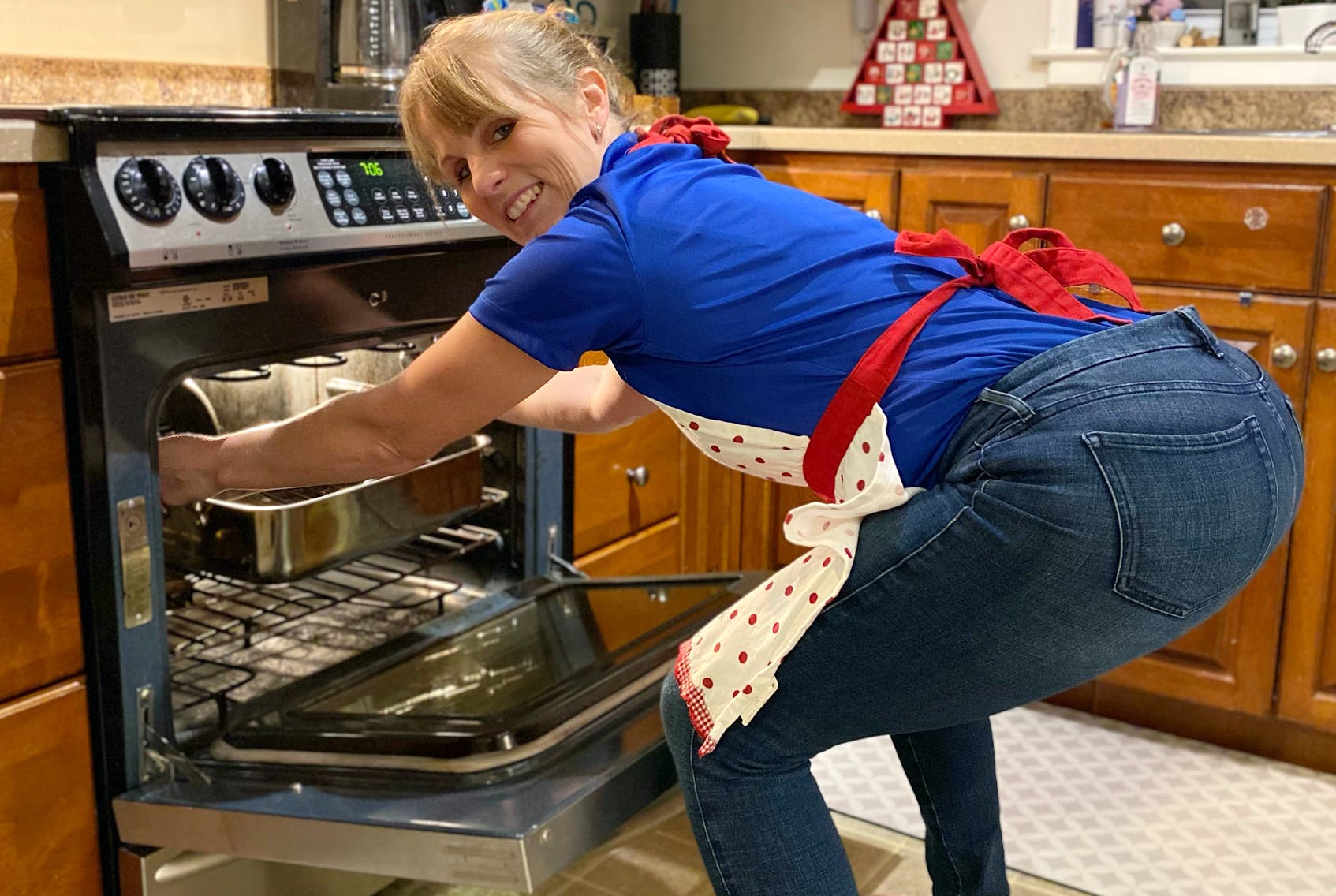Over the years, as a physiotherapist, I’ve treated clients with “turkey back” and other kitchen-related injuries every holiday season. Here are my five best tips for proactive steps you can take to reduce your risk of injury in the kitchen this holiday season.
1. Take care when lifting the turkey
“Turkey back” (as I’ve affectionately nicknamed it) happens when we overload the joints and muscles of the back getting the turkey (or another heavy dish) in to or out of the oven. This movement is awkward because of the long reach over the oven door and a relatively low shelf.
The best technique to reduce the strain on the back involves hinging at the hips, bending the knees, and maintaining a gentle tightening of your abdominals. Avoid holding your breath as you lift the turkey by purposely exhaling while doing the hardest part of the job.
2. Wear shoes when cooking
We often spend long periods of time in the kitchen leading up to and during a holiday season. Pain on the soles of the feet can develop and can also progress into a painful condition known as plantar fasciitis. By wearing a pair of walking or running shoes in the kitchen, the joints and soft tissues are better supported and
cushioned, reducing the risk of pain during or after your cooking.
3. Plan to do kitchen work in standing and seated positions
Longer periods in the kitchen can also cause upper and lower back pain as the muscles get tired from maintaining a consistent position. Identify tasks that can be done in a seated position to give yourself a break from standing every 20 to 30 minutes, whenever possible.
4. Break up long periods of standing by stepping on the spot
If the work you’re doing in the kitchen requires maintaining a standing position for prolonged periods, try taking five to 10 steps “on the spot” every 15 to 20 minutes to relieve the consistent pressure on the joints in your lower back, hips, and knees. This little bit of movement can go a long way to reducing joint stiffness and discomfort at the end of the recipe!
5. Keep your elbows at your sides
A lot of repetitive upper bodywork happens with the chopping and stirring involved in many recipes. The small muscles in the shoulder get tired quickly when we are reaching out from our bodies. When the shoulder tires, it can be painful. Stress can also be transferred to the neck and can lead to neck pain.
Keeping your elbow near your body (ideally right under your shoulder) as you chop and stir can reduce the stress on your shoulder and reduce your risk of developing shoulder and neck pain.
Food is an important part of many of our celebrations. I hope you can enjoy the flavors of your favorite recipes this season without the distraction of pain or injury!
Book an assessment with Zoomers
Use our online booking tool to find a time that works for you!


